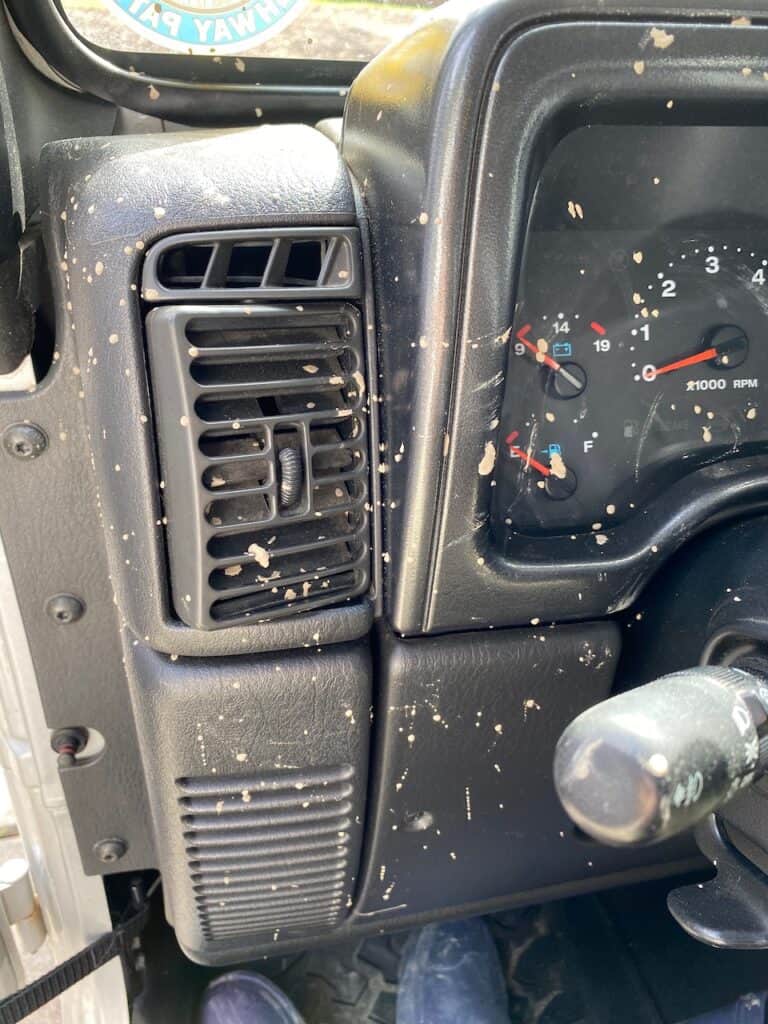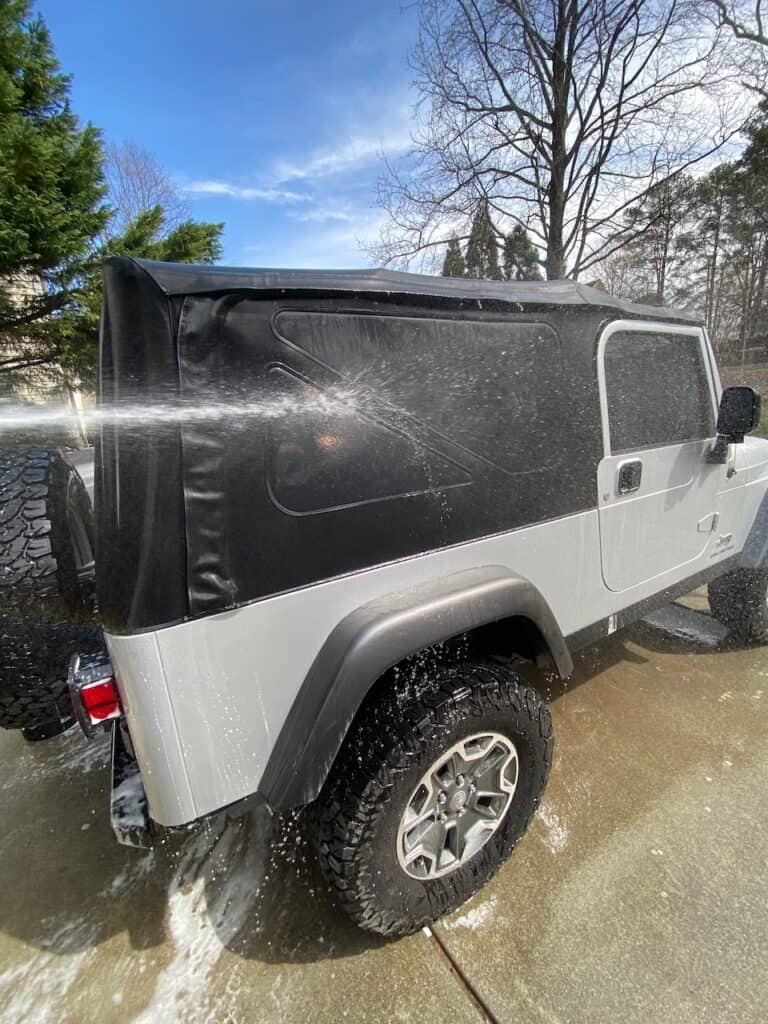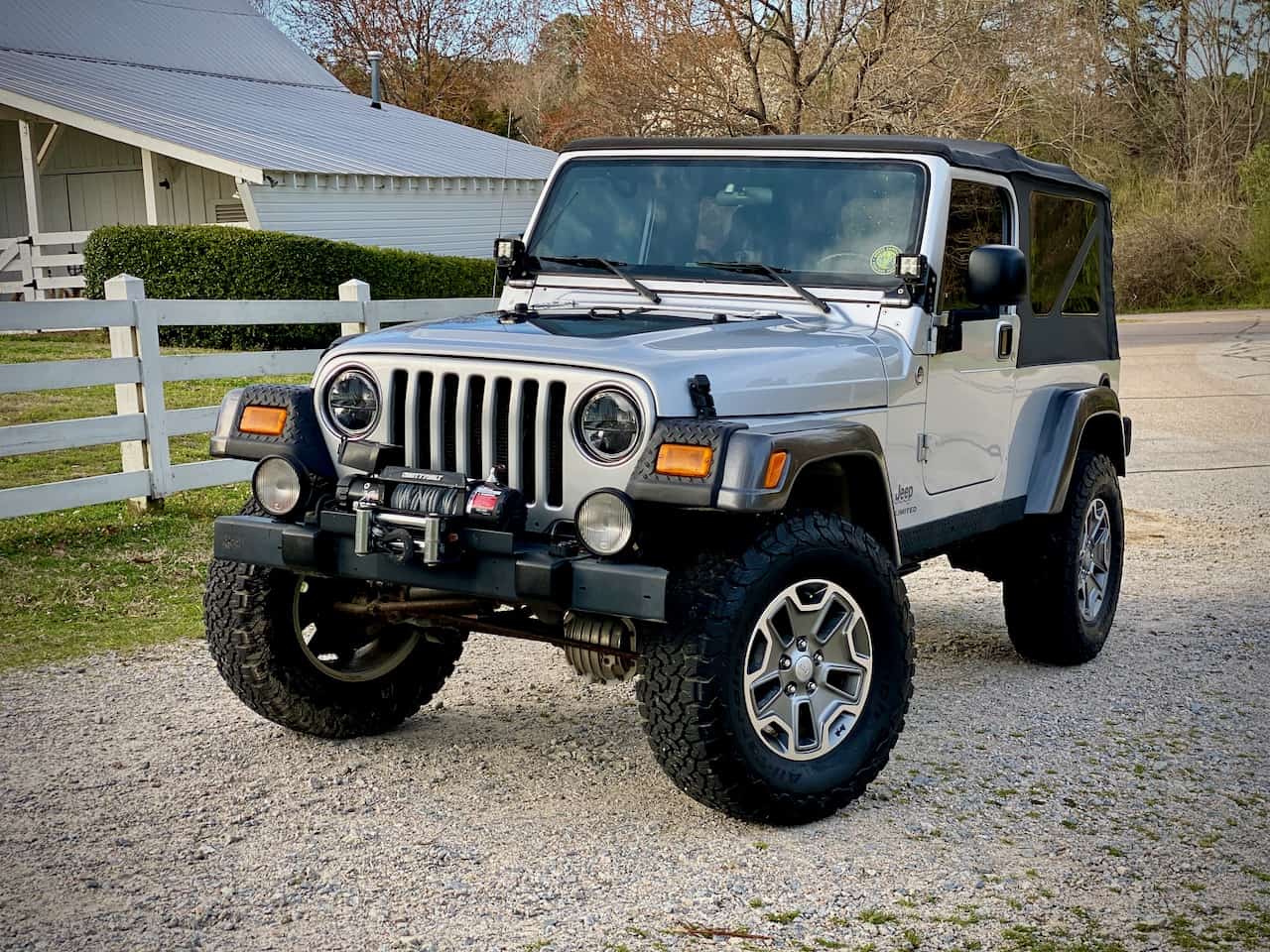Will Leaving Mud On My Truck Damage It?
Mud looks like a sign of success on your truck. It is testimony that you went through dirt and came out unscathed. However, it may not be the best thing for your truck. Here is what you need to know.
Mud can be left on a truck, but doing so can cause damage to the paint and encourage rust to form. In general, it increases wear on the truck’s engine. It’s best to remove mud as soon as possible to ensure the truck will not sustain unnecessary damage.
However, the longer the mud stays on your truck, the more the increase in the complications that can occur to your rig. Mudding is a sport for 4X4 owners, but that doesn’t give you the leeway to leave your truck all soiled up. How will that mud affect your truck?
Will Leaving Mud On My Truck Damage It?
You can leave the mud on your truck for a while so that you can show off to your buddies and narrate stories of your off-road driving but doing so isn’t the wisest choice.
Leaving mud on your truck can cause several damages. It can damage the paint on the body of your truck and can lead to the formation of rust, which can corrode the metallic parts of your truck. The mud can also increase the wear on your truck’s engine.
Most of the small components of your truck that come into contact with mud will wear out fast. These parts include the brake and steering. When that happens, you start losing your wheel balance and, consequently, damage more parts.
The damage does not occur instantly. You can leave your truck with mud for a few days and still find it okay, but if you leave it for a long time and severally, you will start seeing the damages.
Does mud affect truck paint? Definitely yes, and that is just one of the many damages that you can expect.
There are many reasons why mud is not good for your truck. For starters, mud is watery soil and the water can cause rusting. There may also be chemicals such as acids in the soil, which further degrade the surface of your truck.
When you leave mud on your truck, you allow the chemical substances time to react with truck components. This means that the longer you leave mud on the truck, the more severe the damages on the truck.
There are several damages that may occur on your truck as discussed below:
What Damages Does Mud Cause on the Body of a Truck?
The body of your truck comes in direct contact with mud. The amount of damage on the paint of your truck will depend on the contents of the mud. If the mud is acidic, the damage is more.
If you go mudding in a swamp or a bog, the mud there contains mostly acids. This means that damage to the paint will be more if you leave mud on the truck for a long time. Although the damage will not occur after a few days, you still need to wash off the mud as soon as you get home.
If the mud stays on the body of your truck for a few weeks, the mud will form mud stains, which appear as brown rings on the paint. Even after thoroughly washing out the mud, these small stains will still be visible.
The stains form if you do not wax your paint after washing. If you plan to mud often, wax the paint to make it resistant to stains.
If there are scratches on your paint and you go mudding, you expose the metal that makes your truck’s body to mud. If you fail to wash off the mud and dry the surface, the area will not only stain, but may also corrode. The corrosion will spread under the paint and cause more damages to the body of your truck.
Off-roading increases the risks of your truck getting scratches. The worst part is, you may not even know that these scratches exist, and this is how damages occur on your truck.
How Does Mud Affect Your Truck’s Undercarriage?
The undercarriage of your truck gets so much mud. However, most people forget this part when washing the truck. Even those who remember to wash it do not do it sufficiently as the part is hidden.
Mud left on the undercarriage can lead to damages on the suspension, the frame, and other mechanical parts of the truck. The parts may stain and later corrode, affecting the performance of your truck.
The frame has drain holes that let out water. If mud gets on the undercarriage, these holes may block and stain and that affects the performance of your truck even further. If you do not realize there is mud in the frame, the damage progresses slowly.
To avoid this, you need to wash the undercarriage properly. Pump water through the holes and then dry them completely to ensure rusting does not occur.
How Does Mud Affect the Mechanical Parts of a Truck?
When you go mudding, most of the mud goes to your undercarriage where parts such as the suspension, axle oil seals, diff lockers, idler pulleys, wheel bearings, and alternators are. These parts do not love mud as it can cause so much damage.
If you go for deep mudding, mud left on the rear drums can cause excessive wear. Again, mud scratches the small moving components of your truck such as brakes and steering. The mud and sand act as abrasives on these small parts, and they affect their performance significantly.
Mud will also have an effect on the rubber parts when left on them for long. This is why mud left on the undercarriage can result in leaking oil seals and excessive wear and tear of the rear drums. These parts are easy to destroy, and when that happens, your truck may suffer serious performance problems.
Mud has an effect on all mechanical parts of a truck that it touches. It is, therefore, important that you ensure the mud doesn’t stay in contact with these parts for long.
Does mud make a truck rust? Yes, and that will be the start of many more problems. So, wash your truck as soon as possible.
How Long Can I Leave Mud On My Truck?
You should not leave mud on your truck for longer than a few days. A day or two with mud will not cause any damages. However, if your truck still has mud after five days or after a week, you will be pushing your luck.
The reason why you need to wash the truck soon is that you may never know whether there are scratches on the body where corrosion might occur. Corrosion doesn’t wait for weeks – after a few days, rust may appear on the surface of your truck.

Even if you do not go mudding, you still cannot leave your truck unwashed after two weeks of everyday use. Dirt can clog some components of your truck and cause more damages.
Plus, once mud dries on the surface of your truck, especially if there is sand in the mud, it becomes almost as tough as concrete. It will be challenging to remove and may even cause peeling of the truck’s paint.
If the mud contains salt, corrosion will not take more than a day to start damaging your car. As a rule of thumb, always wash your truck immediately you get home from mudding. A clean truck is easier to inspect, and you are sure you have it protected.
How Can You Clean Your Truck After Mudding?
Mudding is fun and it is a 4×4 affair. If you are a good driver, you can go mudding with 2WD and still come out on the other side. The fun comes with so much dirt and the chore of cleaning your rig afterward.
After mudding, your truck will have mud everywhere, and you might have to clean the truck several times before you get rid of all the mud.
The best way to get the mud off your rig is to clean it immediately you get home after mudding. Mud, and its constituents, is different in different areas. There are areas where the mud is thin and others where it is thick and gummy.
Regardless of the nature of the mud in your area, it will come off with ease if you wash it while still fresh. For some driver, however, it feels good to drive a muddy truck around town to show everyone what a success the mudding was. Once the mud dries and becomes as hard as concrete on your truck’s undercarriage, you will no longer see it as a badge of honor.
1. Use High Pressure
Clean the mud using a high pressure pump. Removing all the mud will be a challenging task and one that a high-pressure pump can help you tackle. You can have a pressure washer at home or take your truck to a car wash.
If you go mudding a lot, and you have a space where you can wash your rig, it is cheaper to buy a pressure washer. These washers cost between $70 and $500 (sometimes more, depending on the quality and the brand you go for). After cleaning, all the mud will go to your driveway, and you will have to clean the driveway afterward.
Note that, high PSI might affect the paintwork on your truck, so you need to regulate the pressure. Besides the pressure washer, you might need a U-bend attachment to make it easier for you to wash the vehicle’s undercarriage.

Taking your car to a car wash is taking the easy way out. You will pay up to $20 to have the car cleaned, but you will not have to do the messy job of removing mud. The main advantages of a car wash are that the pressure is high, and they offer warm water rinsing, which makes mud removal easy.
2. Pay Attention to Areas Under the Hood
Mud goes to all parts of your vehicle and the engine bay is one of them. This is an area you need to be very careful when washing as there are so many parts you do not need to soak in water. The precious electronics in there need so much care to ensure they are still functional after the wash.
You also need to take care of the filter regardless of the type of filter your truck uses.
The best way to clean your engine bay is to use a hose, a clean towel, and a brush. This means you have to wipe the parts one at a time, ensuring you do not wet what needs to stay dry. You can also leave the engine running and carefully use a pressure washer to clean every part.
Most dealers will recommend you use steam to clean the engine bay. While at it, cover the engine electronics with plastic bags. You can use a mild cleaning agent/cleaner to speed up the process.
3. Pay Attention to the Undercarriage
There are so many mechanical components in the undercarriage that mud can damage. Ensure that parts such as wheels, bumpers, suspension systems, axles, radiators, and so many other parts are thoroughly cleaned. Most of these parts are hidden, and it is easy to forget them.
Again, the parts have cracks and crevices that hold mud. While under the hood, thoroughly wash the radiator. The little vents can hold so much dirt and later affect the performance of your truck.
If mud dries on your radiator, your truck will start overheating.
Wheels also have small spaces where mud can lounge and become challenging to remove. Too much mud can push your wheel out of balance and cause your truck to shake when you drive at high speeds.
After cleaning, you are sure that all truck components will last longer. You are also sure your truck maintains its top-tier performance.
Closing Thoughts
You can keep your rig clean by avoiding the mud. But there is no fun in having a 4X4 if you cannot go mudding. So, what you can do is clean your truck immediately you get home.
After cleaning the truck, wax it to protect the paint from acids and other chemicals that may react with it. If you love showing off after a mudding expedition, show off the same day and then get home and wash your rig. You will save money you’d otherwise use to replace corroded components and other vehicle repairs.
Can mud mess up your truck? Yes, but it can only damage it as much as you allow it.
 offroad trails!” class=”wp-image-18277″/>
offroad trails!” class=”wp-image-18277″/>